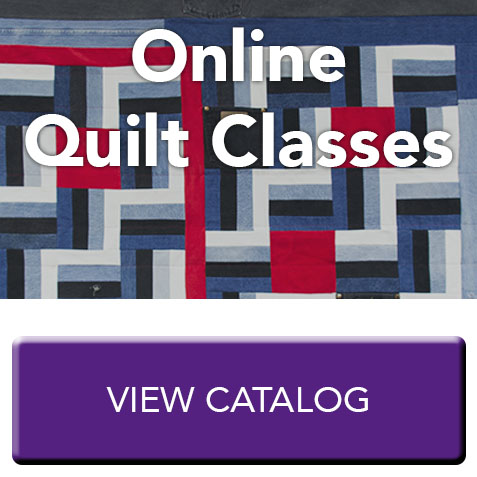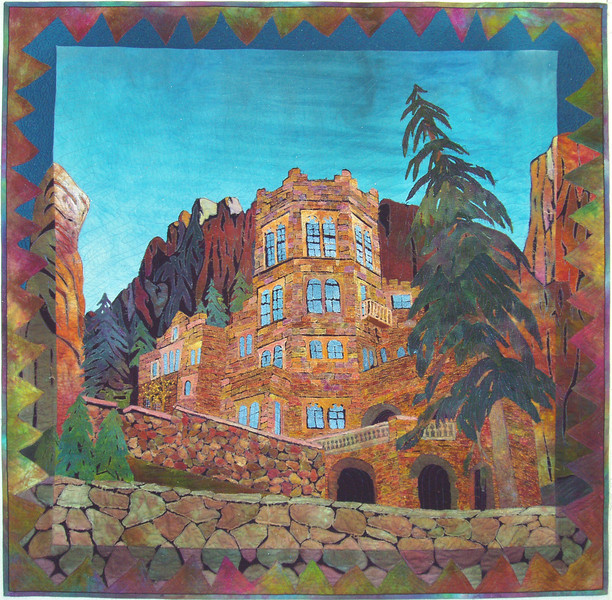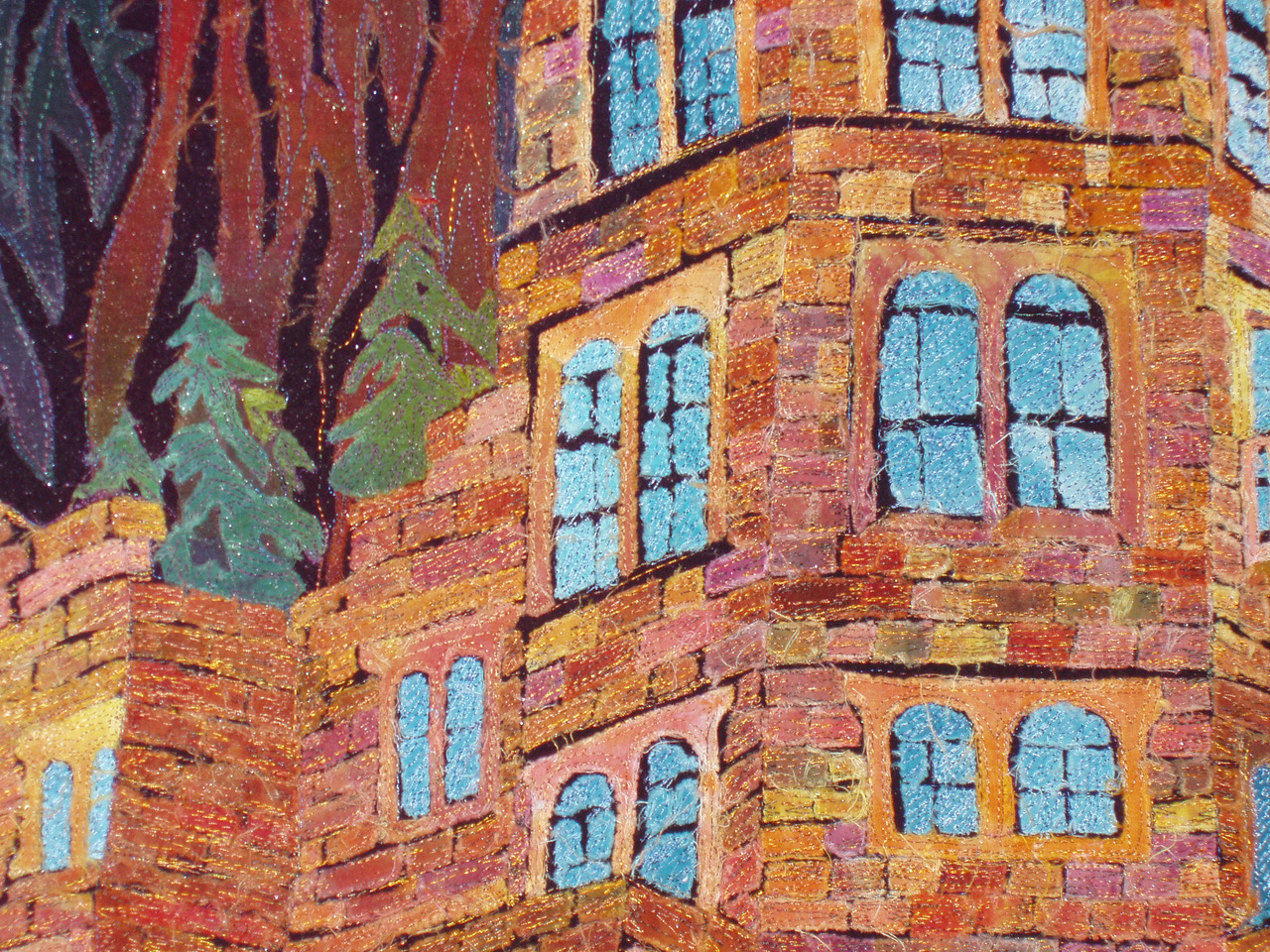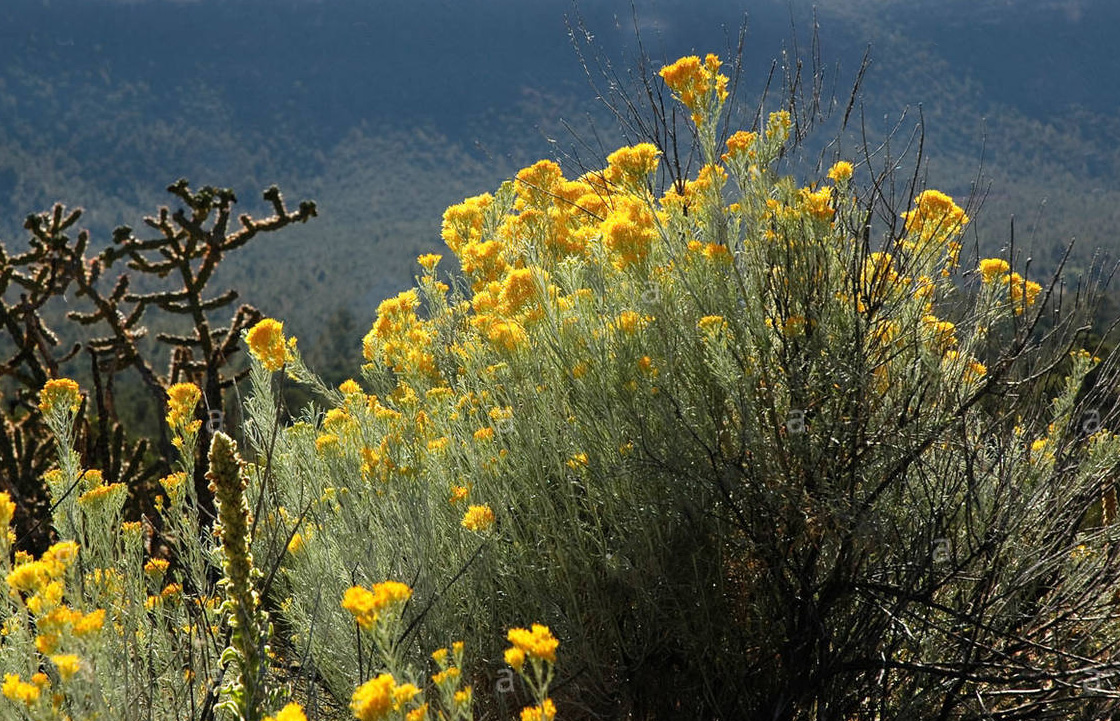| The original Glen Eyrie was built in 1871 by the founder of Colorado Springs General William Jackson Palmer and his wife Queen Palmer who, at age 21, opened the first public school in Colorado Springs. Sitting on their 800 acre estate, the castle was the couple’s dream home. It was remodeled in 1881 with the addition of a tower and made to resemble a stone castle in 1903. |
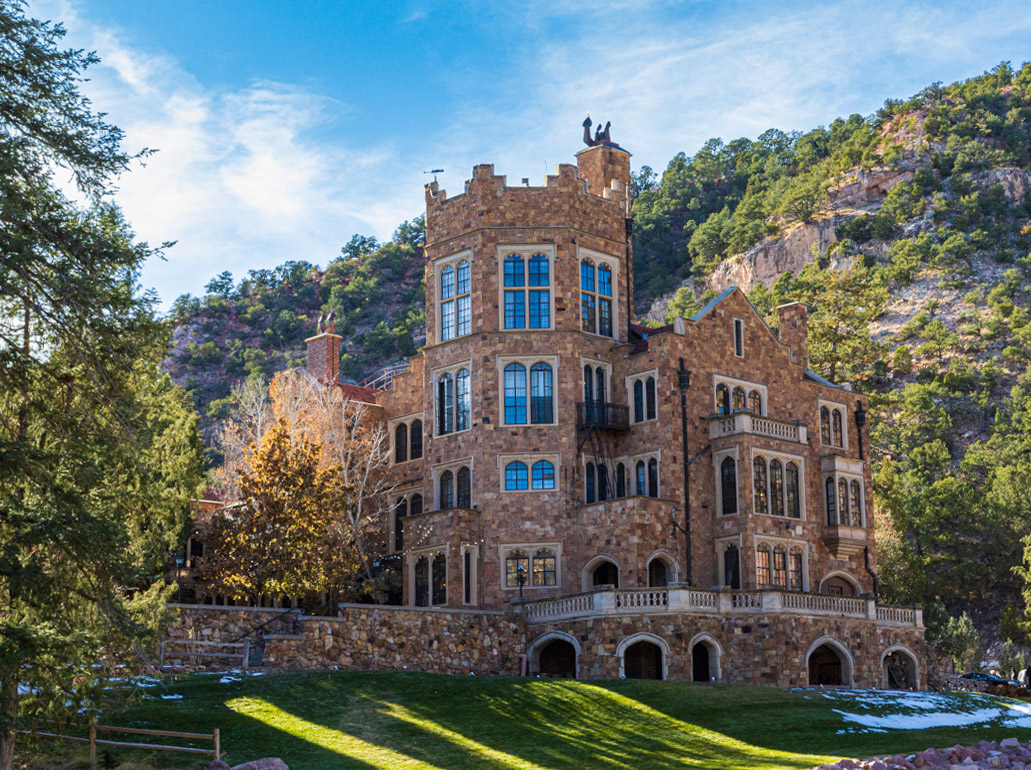 |
| The castle sits near the famous Gardne of the Gods in Colorado Springs and these rock spires served as inspiration as I created the quilt. |
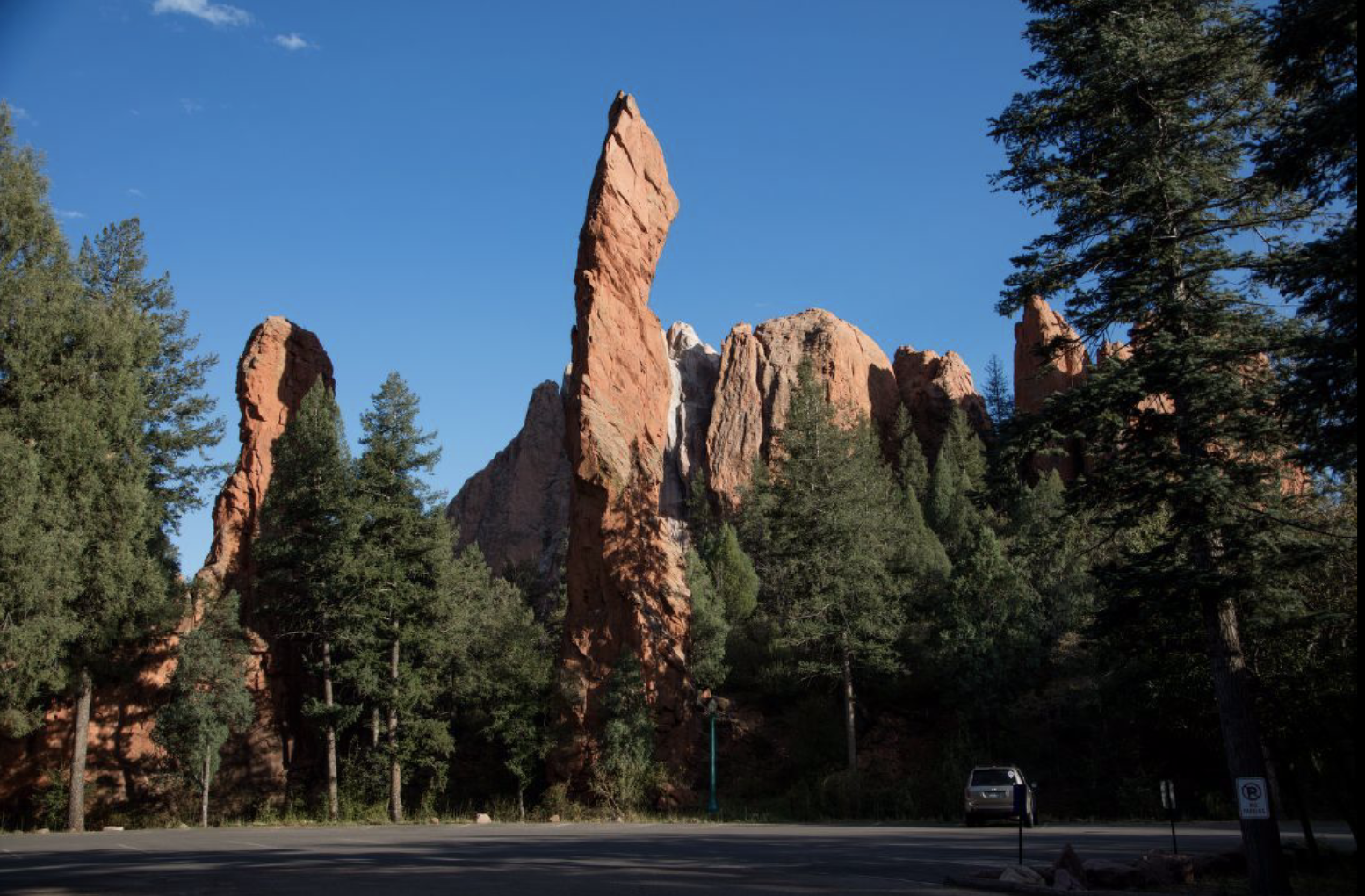 |
|
The quilt was commissioned in 2004 and is now part of a private collection. The raggedy and frayed edges are on purpose to create a wonderful, rich visual texture. The pieces were individually place on the background and the dark background allowed me to create the space between the bricks, and individual window frames. Everything was scribbled (free motion stitching) to be held in place. Once the quilt was completed, it was washed in a washing machine to enhance the frayed edges. Unorthodox… perhaps. But it gave me the result I wanted for this quilt. |
|
|
I'm Just Sayin
Jigsaw Puzzle: Glen Eyrie Castle
Featured Quilt: Asternoon Delight
|
I enjoy photography and have for years. Some quilts over the years were inspired by a photo - and some photos were used to create the pattern for a pictorial quilt. Several years ago I purchased a large format printer so that I could blend my passion for photography with quilting. |
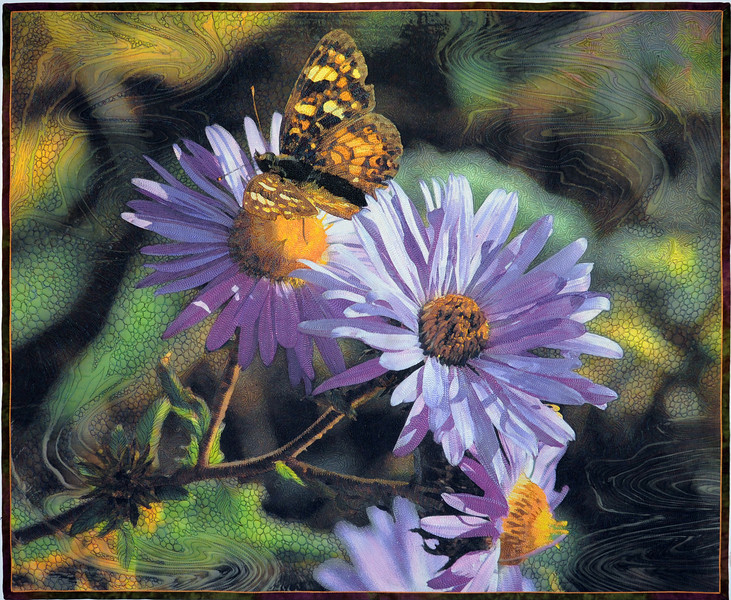 |
|
Asternoon Delight began as a photo that I took of a cluster of asters with a butterfly perched on top. The photograph was manipulated in photoshop with another photo of wood grain superimposed on top - using a montage technique - to create the swirls and swoops in the background. The image was printed full size onto whole cloth and then heavily free-motion quilted to add texture and detail. Printing on fabric is not an easy process because the color profiles will not generally give rich deep color - but using a proper profile, I’m able to print with successful accurate and intense color. It won an honorable mention in Houston a few years ago. |
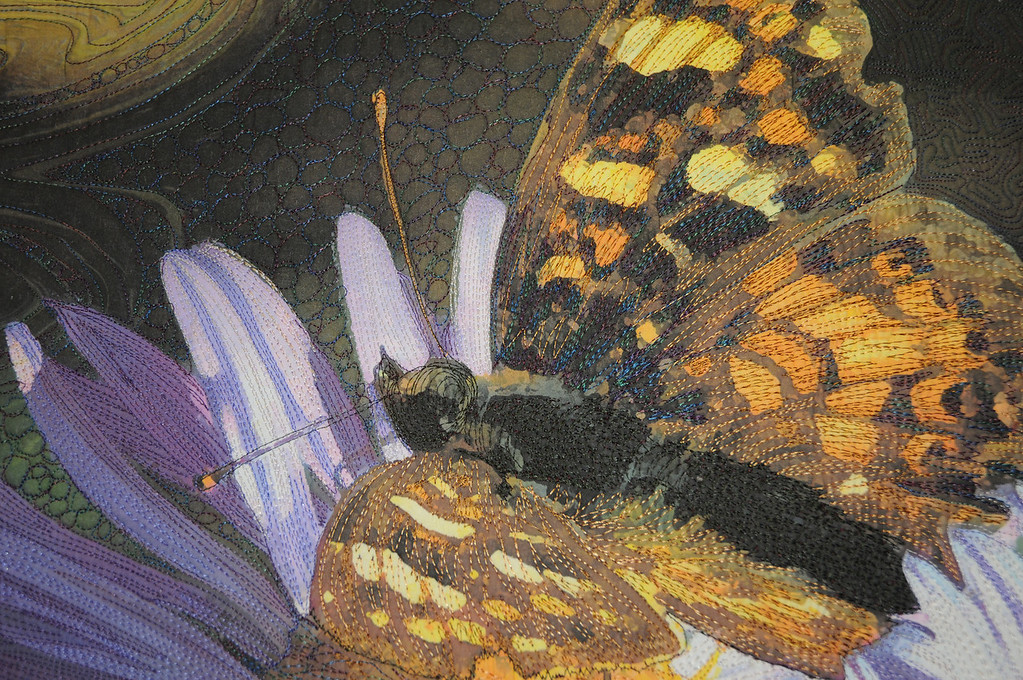 |
|
If you notice a couple of leaves on the main branch (bottom left), they are not ‘there’ in the photo, but they are ‘stitched’ into the image with the quilting process. |
Jigsaw Puzzle: Asternoon Delight
|
Click the 9-patch grid to change number of pieces. Click the circle arrow to make the puzzle pieces rotating instead of stable orientation. Also, there are tips under the "?" on the upper right of the puzzle. If you'd like a full screen version, click the button below. Have fun! |
Featured Quilt: Chamisa Corral
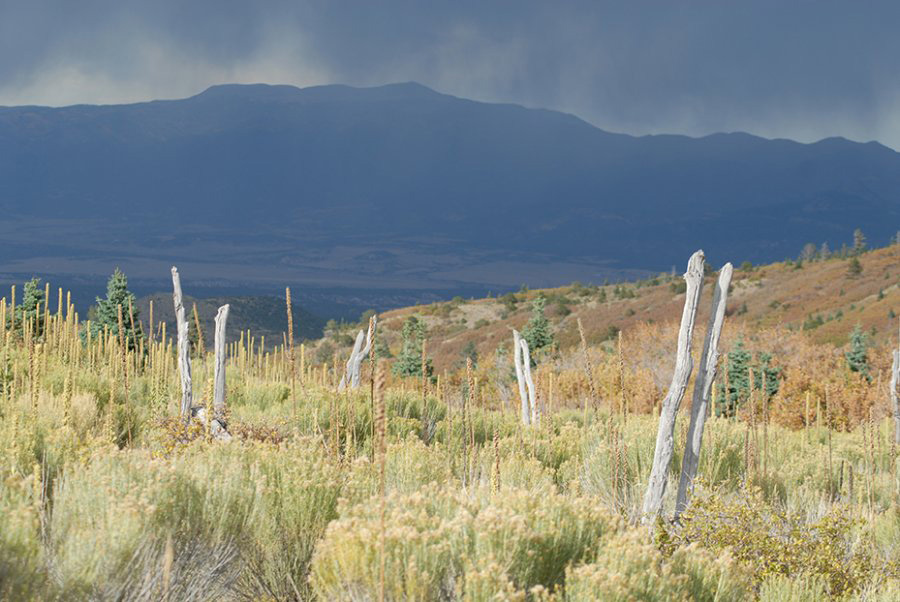 |
|
Have you ever had a quilt almost cross the finish line only to be tucked away...unfinished? That’s what happened with this quilt, Chamisa Corral. It is based on a photo I took of the old cowboy corral located on my parcel in the Colorado mountains. The rock formation is called Autumn Rock and stands about 90’ tall. At the base of the rock are the ruins of a stone cabin and an old corral that was used for breaking horses. There is a spring fed stream nearby. Both the cabin and the corral have seen better days but they are a great reminder of life many years ago in a remote area. At 8900 feet elevation, no doubt this was a summer camp for the cowboys. Winters would have been too harsh to live this remote. Most of the old posts of the corral burned in the Spring wildfire of 2018. Only the center post and one other post remain now. While I wasn't able to locate the original photo from 2002 that I used for this quilt, I was able to find a photo of the posts before they burned - facing the Wet Valley rather than toward Autumn Rock. In this photo, the tufts of yellow flowers have turned into faded puffs of gray. Below is a photo of chamisa in bloom. I started this quilt with the base fabric used in the sky and layered the appliqué on top. At some point I recall becoming unhappy with this quilt and set it aside, only using it as an example of how I use snippets or confetti pieces for appliqué. Several years later I began teaching/preaching "FINISH" things. If they are close to the finish line you will feel great about it. Taking my own advice, I pulled this quilt out and got to work. To my surprise, I started liking what was happening an in only one day this quilt was finished. It sat dormant for about 12 years - and now... I love it. I hope you do too. The Message: Not all project should be finished - but there are some that are close to the finish line. Get busy and finish one. It is good medicine for your soul and spirit. |
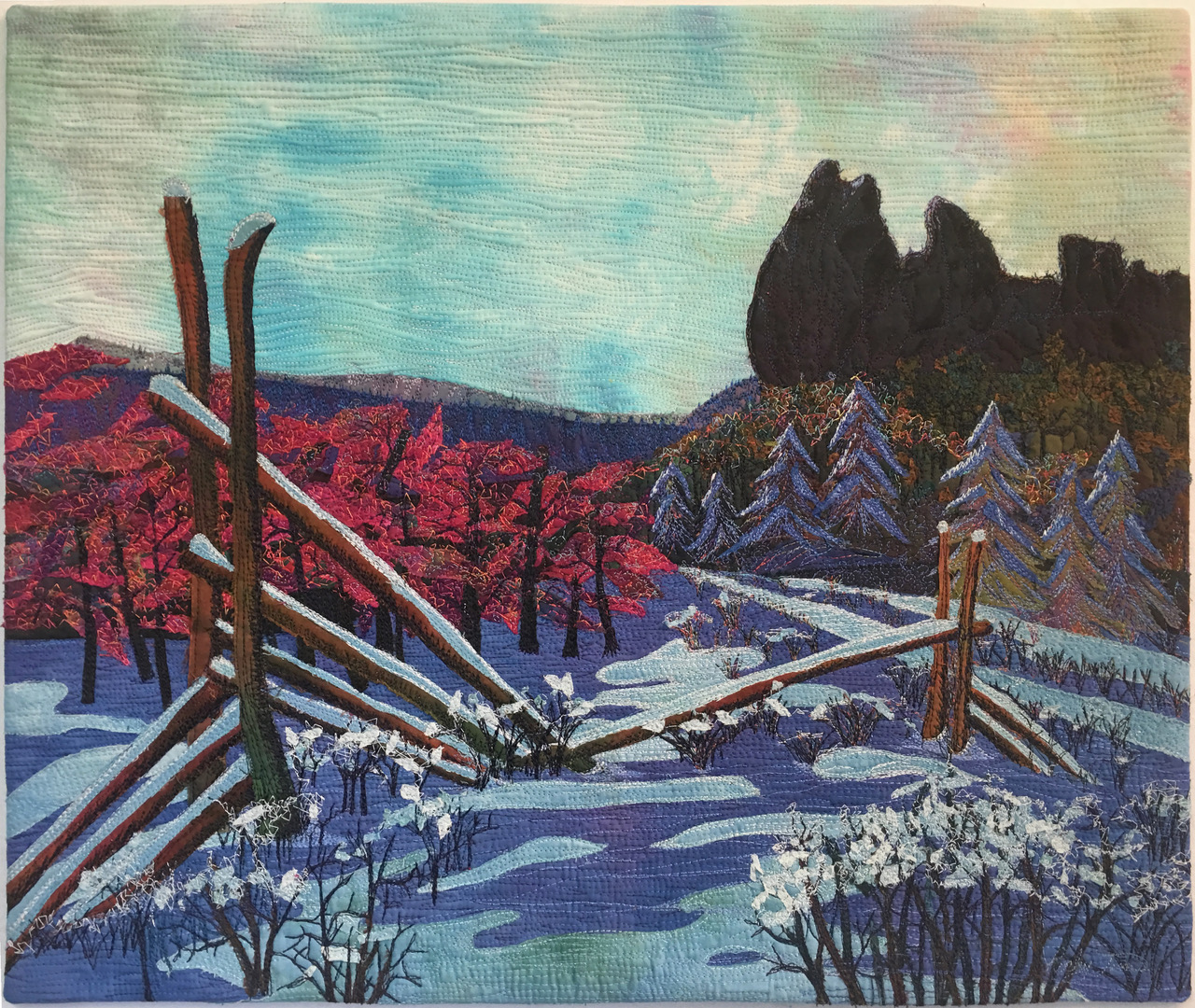 |
| First, the background fabric was stabilized from beneath with a layer of cotton batting and a medium weight tear away stabilizer. I then used a raw edge (no fusible) scribble appliqué technique to create the design. While some may think the quilt is thread painted, it’s really appliqué that is stitched down with thread (and embellished with thread) using free-motion stitching. In some cases I favored really large stitches to get the desired effect. |
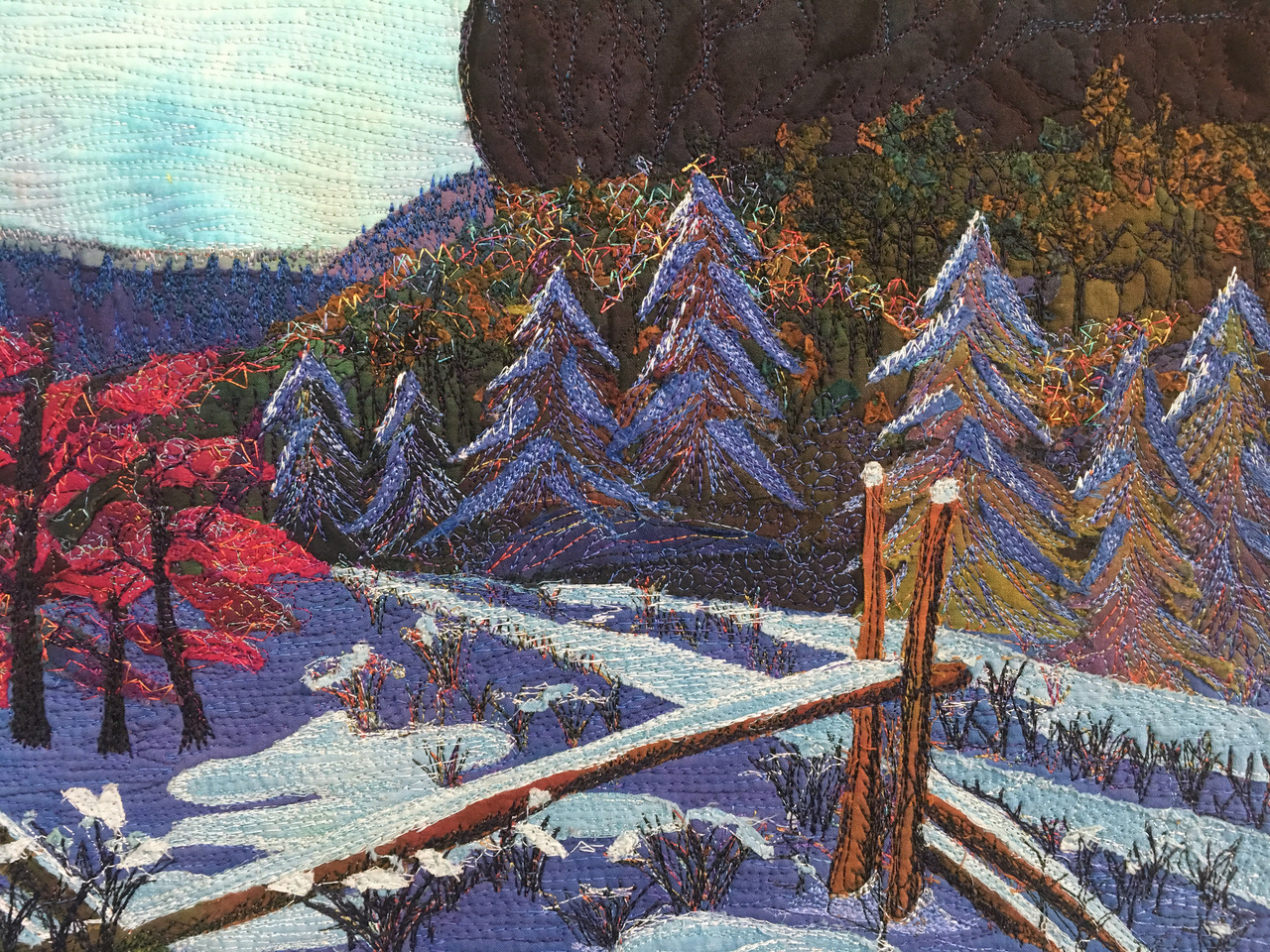 |
|
Fun fact: In the Southwest, Chamisa is a wild shrub brush also known as Rabbitbrush. It is a bushy plant with yellow tufts of fluffy flowers in late summer. When the first snows come, it will blanket on top of the fading flowers. It grows abundantly in the old corral.
|
